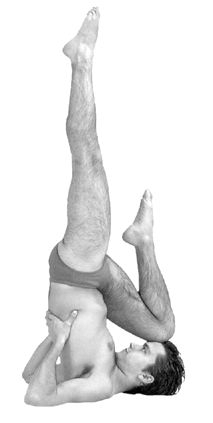How Yoga Can Help in Today’s World
It’s hard to imagine what the originators of yoga would have made of the modern world, since it is so fundamentally different from the one that was the cradle of early yoga. Yoga developed over thousands of years, and yet today, in this strange, new world yoga is still delivering its benefits and bounty in ways that make it seem like it was designed for this very century. In fact, evidence is growing that suggests that yoga has a genuine place in modern health care, both in terms of prevention and treatment of illnesses.
A brief history of yoga

It’s not clear just how old yoga is as a practice, although historians believe it began somewhere between five and ten thousand years ago. The word ‘yoga’ first appeared in the sacred texts of the Indian Vedas around 1,500 BC, and the most well known of the yoga scriptures is the Bhagavad Gita, which is thought to date back to 500 BC. Some of the earlier scripts were collated to form an 8-limb path to enlightenment, which began the so-called Classical era, in which the various roots of yoga became structured and easier to teach and practice.
Tantra and Hatha yoga, which are well known today, developed later, and the practice of yoga was confined to the East almost exclusively until round about the turn of the twentieth century. At that time, the growth of yoga worldwide began with Swami Vivekananda delivering a presentation on yoga in Chicago in 1893. Fifty years later saw the first yoga centre opening in Hollywood.
The subsequent growth of yoga has been phenomenal in the West, and for years it has been accepted that yoga can be of great benefit in terms of preventing or alleviating many of our modern illnesses. In fact, as early as the 1920s, a leading yoga authority, Swami Kuvalayananda, first promulgated the idea that it might be possible to measure the physical and physiological changes brought about through yoga practice. Ever since then there have been countless studies into yoga’s impact on many ailments, including heart disease, diabetes, arthritis, psychosis, depression, and so on.
Yoga: means of prevention and treatment

The twentieth century saw some amazing breakthroughs in medicine, and saw the general population largely freed of such horrors as cholera, polio, smallpox, the plague, and so on. As well as the impact of medicine, e.g. in terms of antibiotics, antivirals and the widespread use of inoculations, huge benefits arose from improved hygiene, better living conditions and more freely available water sources.
This continues in this century, and is the culmination of hundreds of years of gradual progress. Slowly, through many generations, steps have been taken that grant most of us a far better chance of living to a ripe old age in relative comfort and good health. Apart, that is, from one insidious problem … the effects of a very modern plague … one of our own making, and born of our own modern ways of producing food, and our increasingly less active lifestyles.
A very modern plague
Yes, we are generally living longer, and in better conditions, but we are living on a diet that is increasingly far distant from our natural diet. It contains a plethora of heavily processed foods, many of which are unnecessarily laden with salt and sugar. Our desire for foods that will last longer means they are pumped full of preservatives, and the food producers, in strident competition with each other and in a desperate effort to appeal to us, lace their products with a whole host of additives to ‘improve’ their taste, colour and texture.

Sorry ... MEMBERS ONLY!
UNLOCK FOR FULL EXERCESS!EXERCESS is an online community of people who want to seriously improve their health and fitness, both mental and physical.
JOIN FREE TODAY!
… and get complete and unfettered access to an absolute goldmine of valuable information.
Already a member? Sign in!
